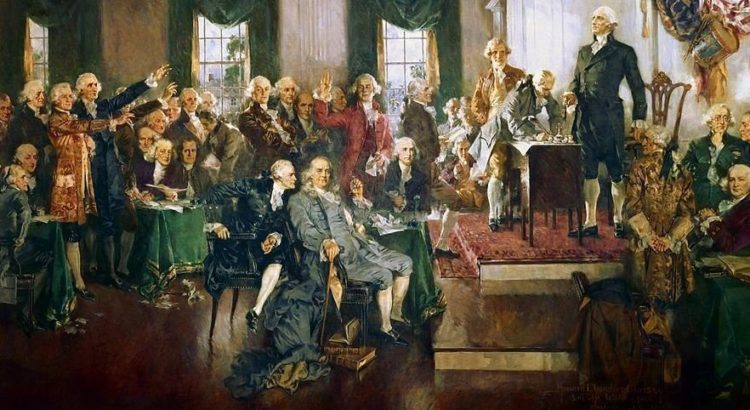Opinion piece:
At some point in every art and art history course, one will most likely learn and talk about why a specific piece was created and what its function is. Never when joining the course, American Constitutional Rights and History, did I think these questions would arise during my discussion.
For homework this week we had to read the entire American Constitution and its annotation. A real joy honestly. My fellow students and I were also tasked with marking/tabbing every indirect and direct reference to slavery we could find in the reading. Then when we got to class, the discussion objective written on the board read, “To take the framers off a pedestal and critique them.” Reading it again I had no idea what my GSI was referring to until she began talking and questioning us about moral embarrassment related to the constitution.
An example of moral embarrassment in the constitution for an example is if it contained a pro-slavery law but then years later people realized it was immoral and stripped it. The embarrassment would be that whoever created it was indeed in the wrong.
In this case, we compared this example to why the framers of the constitution did not include the word slave(ry) anywhere in the constitution considering some of the framers themselves had slaves. They mentioned “Native Americans”, however, they only hinted at slaves with indirect and arguably some direct references. Did they know slavery would once be illegal? Were they trying not to face moral embarrassment themselves?
When considering why the framers did not include slavery in the constitution it made me realize they definitely knew slavery was immoral and were bystanders as well as some being owners themselves. This then made me think about how growing up history classes praise these framers and make you believe they were some sort of genius like gods, when in fact they weren’t so perfect after all.
(Here comes my connection to art finally)
We see it in textbooks, on the 4th of July, and in national art galleries how these framers are represented in a glowing manner. There are many elements of how the framers are represented that display this moment as historic and these characters as having lots of power. From the consistency of how they are displayed, it is inevitable for most to think of them as god-like.
The way the framers have been artistically represented in our culture has construed minds to believe these people were extraordinary. However, they were simply just smart and wealthy individuals carrying immoral baggage who had the opportunity to alter our history for hundreds of years to come.
To have an open mind about these framers is to become aware of the power art has on our society. By observing the warped history our early creators wanted us to see in these paintings, our society sometimes falls on the fact that there is much more truth to be uncovered. These framers should be known and appreciated for laying the foundation of our government but we should not glorify them if who they were as a person is against our ethical beliefs.



Leave a Reply
Be the First to Comment!